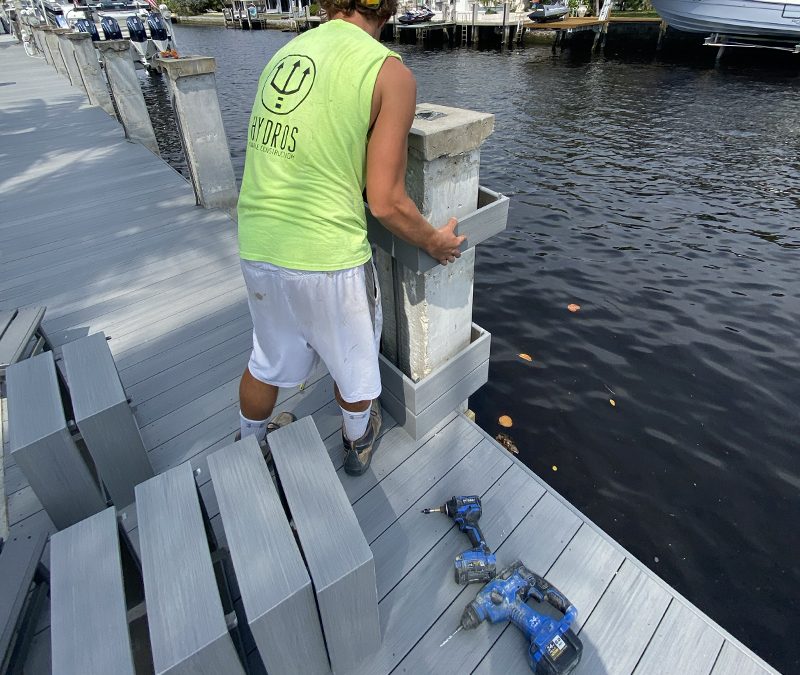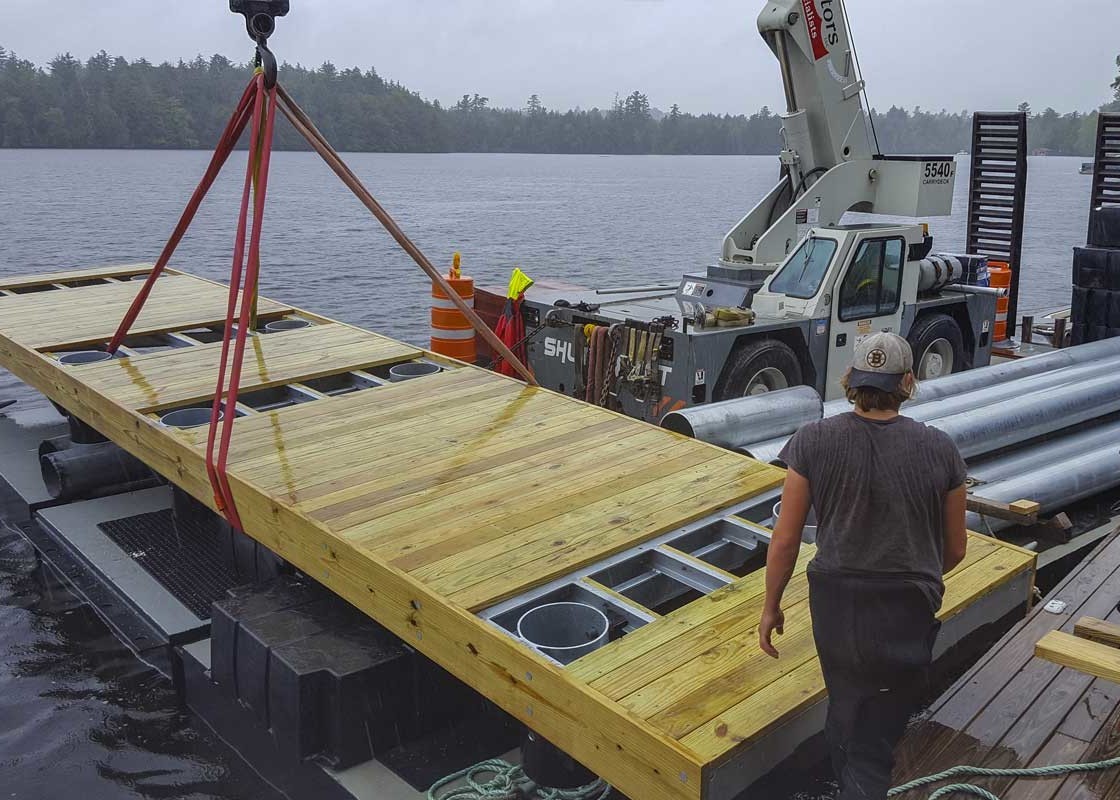How to Address Common Dock Repair Service Issues for Safe Water Tasks

Identifying Common Dock Issues
Identifying common dock problems is critical for preserving the capability and safety and security of your waterside property. Regular inspections can help uncover troubles before they become serious, guaranteeing both the longevity of the dock and the safety of those that use it.
One more common problem is the degradation of flotation gadgets. These tools are necessary for maintaining the dock resilient, and any type of damages or punctures can trigger the dock to list or sink. Regularly examining for leakages or water logged floats can preempt extra substantial concerns.
In addition, algae and barnacle buildup on the dock's surface can develop harmful and unsafe problems. This biofouling not only poses a threat to customers yet can likewise increase the wear and tear of the dock materials.
Lastly, evaluating for indicators of rust on steel parts is crucial. Corrosion can jeopardize the integrity of the dock's structure, making it dangerous. By regularly determining these common dock issues, you can make certain that your dock stays safe and useful for several years to find.
Repairing Rotting Timber
When resolving the concern of decomposing wood on your dock, it is essential to act swiftly to prevent more deterioration. Begin by completely checking the entire framework to determine all impacted areas. Use a screwdriver to probe the wood; if it sinks in easily, the timber is likely decomposed and needs instant interest.
Be sure to cut back to healthy, strong timber, guaranteeing you eliminate all compromised material. After elimination, treat the remaining wood with a timber preservative to prevent future rot.
Following, change the removed sections with marine-grade lumber or pressure-treated timber, which are extra resistant to water damage. Protect the brand-new pieces with galvanized or stainless-steel fasteners to stop deterioration. In addition, applying a water-proof sealant to the new wood can offer an additional layer of defense.
Protecting Loose Boards
Just how do you ensure your dock stays practical and secure for all its users? One essential element is safeguarding loosened boards, which can otherwise posture considerable hazards. Loosened boards not only increase the risk of tripping but can also endanger the structural stability of the whole dock.

For reinstallation, utilize stainless or galvanized steel screws, as these products provide premium resistance to rust in marine environments. Ensure the screws are long sufficient to pass through deep right into the underlying support framework, yet not as long that they protrude with the dock's surface. Pre-drilling pilot openings can aid protect against the timber from splitting.
Finally, preserve a routine evaluation routine to determine and resolve any new concerns without delay. By securing loose boards efficiently, you contribute to the general safety and security and longevity of your dock, making it a reputable platform for water tasks.
Stabilizing Unstable Pilings
Making certain the security of unsteady pilings is critical to keeping a functional and risk-free dock. Unsteady pilings can compromise the entire framework, positioning significant dangers to users and possibly resulting in pricey repair services. The first action in supporting these vital elements is a comprehensive inspection. Check out the pilings for indicators of rot, damages, or moving. Use a degree to inspect for upright alignment and ensure they are driven deep enough right into the substrate to provide ample assistance.
If the pilings are discovered to be unstable, one effective method for support is making use of extra supporting. Cross-bracing with treated lumber or galvanized steel can substantially improve stability. Support the dental braces securely to both the pilings and the dock frame to disperse loads uniformly.

Routine maintenance and periodic review of the pilings' stability are vital to making certain lasting dock security and functionality.
Changing Rusty Equipment
Attending to unsteady pilings is just one facet of preserving a dock's integrity; one more crucial concern is changing rustic hardware. With time, direct exposure to dampness and salt can bring about the oxidation and deterioration of braces, bolts, and screws, endangering the whole framework's security. Routine assessment for rust is crucial, especially after serious weather or seasonal changes.
When rusty hardware is determined, prompt action is called for. Begin by selecting marine-grade stainless-steel or galvanized hardware, both created to resist the extreme aquatic environment. Make sure that you have the suitable devices, such as screwdrivers and wrenches, to safely get rid of the old, rusty items without triggering more damages to the dock.
After eliminating the rustic equipment, extensively tidy the impacted locations to get rid of any type of residual rust or particles. Use a rust-inhibiting guide to subjected steel surface areas prior to installing the new hardware. Tighten all fixtures firmly to avoid future loosening, and regularly inspect the fittings to ensure continuous security.
Changing corroded equipment not just expands the dock's life expectancy yet additionally significantly enhances the safety and security of water activities. By proactively handling rust, you shield both the structure and its users, guaranteeing a satisfying and safe and secure waterfront experience.
Final Thought
Normal examinations and maintenance are crucial to deal with typical dock fixing issues and guarantee risk-free water tasks. By identifying and remedying issues such as rotting wood, loose boards, unsteady pilings, and rusty hardware, architectural stability and longevity can be considerably improved. The application of suitable therapies and marine-grade materials further strengthens the dock against ecological stressors. Such aggressive steps contribute to the total security and functionality of dock structures, fostering a secure setting for water-based tasks.
Making sure the safety and security of water activities pivots significantly on the correct upkeep and repair work of docks (Dock Repairs). These gadgets are important for maintaining the dock buoyant, and any imp source kind of damage or slits can cause the dock to checklist or sink. By routinely this link recognizing these common dock problems, you can make certain that your dock remains functional and safe for years to come
Guaranteeing the stability of unsteady pilings is critical to maintaining a practical and secure dock.Normal evaluations and upkeep are essential to deal with usual dock repair work issues and ensure safe water tasks.
Comments on “Common Problems That Lead to Expensive Dock Repairs”